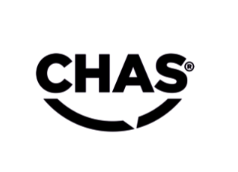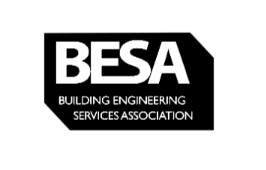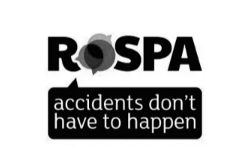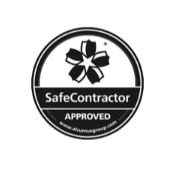phs Group has acquired Citron Hygiene UK find out more here
COVID-19 loves gatherings of people in indoor environments where it finds it easy to spread. But when it comes to schools, bringing together children in one classroom is all part and parcel of everyday education. With as many as 30 pupils all breathing the same air as each other, and their teacher, in close contact for long periods of time, schools can be perfect hot bed of infection. It’s no wonder that new research commissioned by phs found nearly 70% of teachers say they’re worried about the risk of COVID-infection and that the majority feel more teachers are off work now than ever before.
One solution recommended by governments is to improve ventilation in classrooms, including opening doors and windows. However, our research found that teachers find this causes issues of its own – and that’s when windows are even being opened.
Nearly a third of teachers say open windows makes children so cold, they find it hard to concentrate. Around a quarter report that following open-window guidance makes it impossible to teach effectively through winter and that it even results in more viruses because students and teachers are cold. It’s therefore no surprise that just over one in five teachers state it’s impractical.
However, despite the guidance, many teachers are not complying either because there are too many issues or because they physically can’t. phs discovered that 27% of teachers are not able to open their classroom windows. Of those that can, more than one in 20 have never opened a school window and just one in 10 admit doing so only rarely. As a result, a quarter of teachers believe that controlling COVID-19 in classrooms is simply not manageable.
So while improving ventilation is key to combatting the spread of COVID-19, doing so by keeping doors and windows open is clearly not working in schools – particularly during the winter months and inclement weather. However, the consensus is there for an effective solution with 70% of teachers agreeing schools need to do more to provide better ventilation. And the majority, 72%, are worried that a lack of ventilation could lead to more staff and pupil illness. A similar proportion went on to say they actually feel disappointed in government for failing to find a better solution for air purification. Most worryingly, 58% feared that without adequate ventilation systems in place, we will see a return to former COVID-19 measures – which includes strict lockdowns and school closures.
In the absence of being able to provide good, natural ventilation through open doors and windows, scientists point towards mechanical ventilation alternatives such as air purifiers. However, with so many air purifiers on the market, it can be confusing to understand how these work, let alone what to look for. Allow phs air quality experts to guide you.
How does an air purifier work?
An air purifier works by cleaning the air within a room, physically removing impurities. Air is simply drawn into the air purifier, through a set of purpose-designed filters. The phs AERAMAX PROFESSIONAL range of air purifiers uses a four-stage filtration system with HEPA filters which removes 99.7% of airborne particulates, emitting cleaner and fresher air back into the room.
With the AERAMAX PureView technology, you can even see these filters at work; EnviroSmart laser sensors continually monitor air quality in the room, activating the filtration system when harmful particles are present. The digital display indicates the percentage of particles being cleaned or can display the PM2.5 particle count, an industry standard for air quality measurement. This feature makes the invisible, visible; demonstrating how effective the machine is operating and reassuring you how clean the air you are breathing is.
Are air purifiers effective in removing COVID-19?
Yes, air purifiers can be effective at removing COVID-19 from the air you breathe. However, not all are proven to do so and therefore you need to ask for evidence that an air purifier does remove COVID-19 particles. For reassurance, phs’ range of purifiers were put through rigorous independent testing. The results verified phs’ Fellowes AERAMAX® Pro air purifiers AM3 and AM4 air purifiers eliminate 99.99% of an airborne coronavirus surrogate. But they’re not just effective against coronavirus; scientific research has proved that AERAMAX Pro’s are also effective against day-to-day viruses and infections including colds, flu, TB, measles, mumps, whooping cough and chicken pox. They also remove dust, mould and odours, reduce pollen concentration for hay fever sufferers in the summer months and eliminate VOCs such as those from cleaning products. And they even tackle the growing issue of indoor air pollution.
How quickly do air purifiers work?
Surprisingly fast! AERAMAX Pro purifiers can change the air entirely within a room a minimum of three to five times per hour – depending on the room size. That’s around once every 12 minutes. In the fight against COVID-19, this is simply game changing.
Will air purifiers work in classrooms?
Not all air purifiers are suitable for classrooms. You need to look for commercial air purifiers which are completely different from those used in homes. They are designed to work in larger areas with high footfall. By working with a professional provider like phs, you can benefit from the expertise and experience of our air quality consultants who will visit your school at no cost, recommending exact product you need and the right location where it will be most effective. Our air experts are also on hand if any issues arise and provide regular servicing including filter changes so your air purifier will continue working hard every day.
What are the benefits of air purifiers?
AERAMAX Pro air purifiers can effectively remove coronavirus, viruses, germs, pollutants and odours, creating a cleaner and healthier classroom environment. This means that your pupils and teaching staff will be inhaling fresher air with every breath they take with reduced exposure to airborne particles of COVID-19; essential in the fight against infection.
What’s more, our trials in children’s nurseries have had the most incredible feedback. They resulted in air which was as much as seven times cleaner while anecdotal evidence reported a drop in sickness, improved attendance and a fresher environment with a reduction in stuffiness and headaches and improvements to productivity and wellbeing.
What does a UV purification system do?
Air purification systems use UV light technology to treat airborne contaminants passing through the unit. The phs BIOZONE advanced air purification system improves the hygiene both in the air and on surfaces thanks to its sterilising techniques.
As well as destroying viruses including flu, bird flu and surface bacteria such as E.coli, salmonella and streptococcus, BIOZONE is proven to kill COVID-19. Independent testing found BIOZONE resulted in a >99.99% inactivation of the SARS-CoV-2, the virus that causes COVID-19, in less than one second. The device works by drawing air into a purification chamber, it is then exposed to an intense level of germicidal UVC light. This light reacts with the air and produces plasma, disinfecting the air and surfaces and destroying micro-organisms.
As well as being scientifically proven to be effective against COVID-19, it also destroys bacteria, viruses, fungi, yeast, mould, algae and other harmful micro-organisms, while eliminating any unwanted odours.
BIOZONE is highly effective in areas such as washrooms, waiting rooms and food preparation areas.
Is there funding for air purifiers in schools?
Depending on your location and requirements, there is financial support available for schools to improve indoor air quality and tackle COVID-19. In some areas, air purifier trials are underway and funding these within schools is being campaigned for.
- In England, all schools have been offered a carbon dioxide monitor backed by £25m government funding. These allow schools to monitor areas with poor air quality where ventilation needs to be improved – and therefore would benefit from air cleaning. As of January, 7,000 new air purifiers were announced for schools where quick fixes to improve ventilation are not possible, in addition to the 1,000 already announced for special schools and alternative provisions. However, 8,000 air purifiers is equivalent to one for every three schools. And with an estimated 300,000 classrooms in England, this is a shortfall of 292,000. Read more what teaching unions have to say about the provision here.
- In Wales, Welsh Government has earmarked £3.31m to improve ventilation in schools, colleges and universities in Wales to reduce the risk of spreading COVID-19.
- In Ireland, there is funding for schools for HEPA filters where they are ‘necessary’.
In December 2021, the Minister for Education announced €45m of funding for primary and special schools with one-off COVID-19 minor works funding of €17m for post-primary schools. This funding is for minor works and small-scale ventilation improvements.
- In Scotland, Scottish Government recommends appropriate standards of ventilation as an essential part of protective measures. This includes factoring in the use of suitable cleaning devices to enhance indoor air quality. There is £25m funding for businesses to improve ventilation and air quality. There are calls for funding to be provided for schools.
Why shop around for an air purifier?
In England, there is an existing framework which has been used to create a marketplace for air purifiers. However, you still have the advantage of being able to shop around rather than limiting yourself to just two products, providing the purifiers match the criteria outlined by the Department for Education.
If you’re looking to improve the air quality in your school, seek out an air purifier which has been scientifically proven to remove COVID-19 particulates with an airflow and effective area suitable for your needs and is significantly more competitively priced. For instance, sourcing an air purifier on the government marketplace can cost as much as £1,170 per product with high filter costs.
You may also want the option to wall mount your air purifier rather than it taking up valuable floor space. Finally, sourcing an air purifier through an expert provider such as phs comes with the benefit of free consultation from an experienced air quality expert. This means your air quality solution will be tailored specifically to the individual needs of each classroom, effectively removing COVID-19 from the air and reducing the risk of infection.
Where to find more information about air purifiers and UV air purification systems for COVID-19 in schools?
For all of your air purifier, air cleaning and air quality needs, speak to one of phs’ air quality experts today for a free consultation with no obligation. Contact us today

































